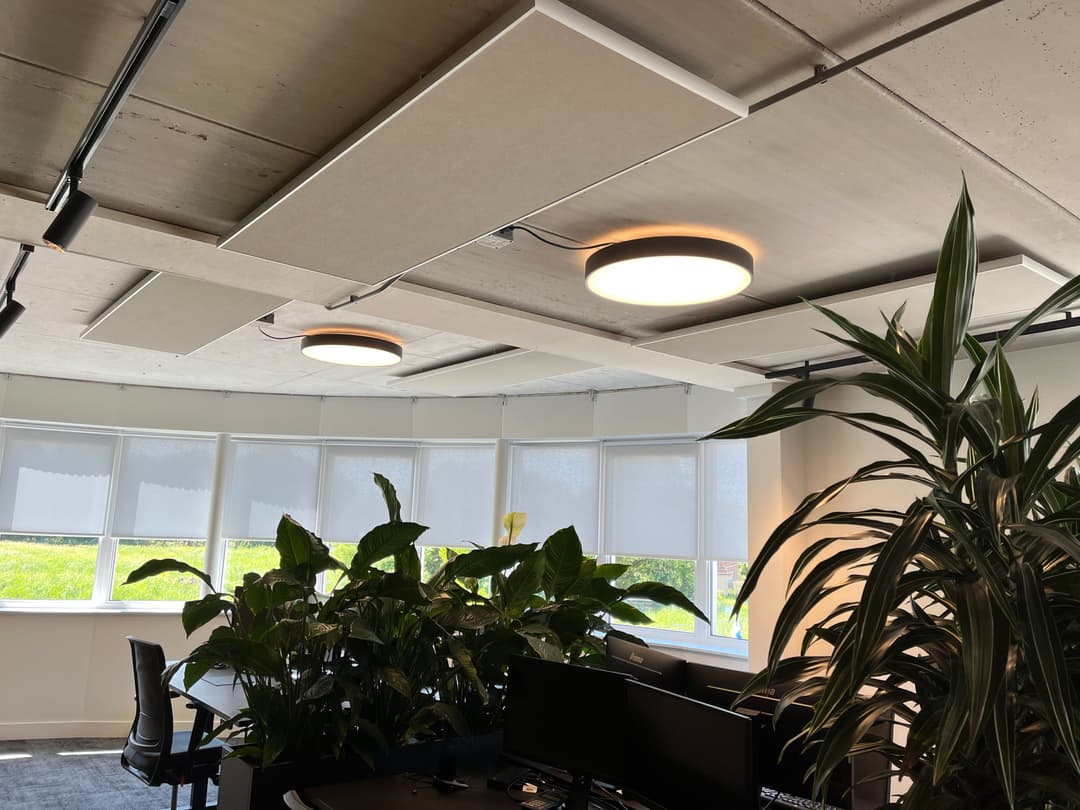What is acoustics?
What is acoustics? "Acoustics" is in the broadest sense defined as the science of sound. The word "acoustics" is often used when referring to the sound and reverberation of a space. In this blog, we will focus on the latter, also known as room acoustics.
What causes poor acoustics?
Whether it is a person or a machine: every sound source creates sound. This sound travels in almost all directions in the form of a vibration. When the sound encounters an object such as a wall, there are 3 possibilities:
- Sound is reflected and bounces back into the room via the wall;
- Sound passes through the wall (and is audible in the adjacent room);
- Sound is absorbed: in this case, the sound is extinguished by converting the vibration into (almost negligible) heat.
For good acoustics, it is important that a lot of sound is absorbed and little sound is reflected. This is entirely dependent on the materials in the room. With smooth and hard materials, sound is mainly reflected. In these cases, there is often echo and thus poor acoustics. Soft, open materials, on the other hand, absorb sound, resulting in less echo.
How good or bad the acoustics in a room are strongly depends on the intended use of the space. In a religious building, it is usually appreciated if there is a lot of reverberation, but in an open-plan office, reverberation is experienced as annoying. A "good acoustics" is therefore always a relative concept.
What does good acoustics contribute to?
A good acoustics brings balance between speech intelligibility and speech privacy, ensures optimal concentration, and reduces fatigue. Our hearing is developed in such a way that we can hear perfectly in nature. In nature, sound comes from one direction.
However, nowadays we spend up to 90% of our time indoors, where sound from poor acoustics enters the hearing from all directions. This has huge consequences for functioning. It is no coincidence that 70% of people are unhappy with echo in the workplace.
After distraction, it can take up to 25 minutes to return to the original tasks and another 8 minutes to reach the same concentration level as before the interruption. Therefore, it is extremely important to have the acoustics in the space arranged properly.
Have you experienced the difference between good and bad acoustics yourself?
By listening to the audio clip below, you will experience the difference between good and poor acoustics for yourself.
What are the reasons to improve the acoustics?
The main reasons to improve the acoustics in a space are:
- creating more calm;
- better concentration;
- good speech intelligibility;
- a safer working environment.
Products to improve acoustics
To improve the acoustics in the space, acoustic products are added. Products can include ceiling panels or wall panels, for example. These products have the property of absorbing sound. At EASY Noise Control, we have a wide range of acoustic products.

